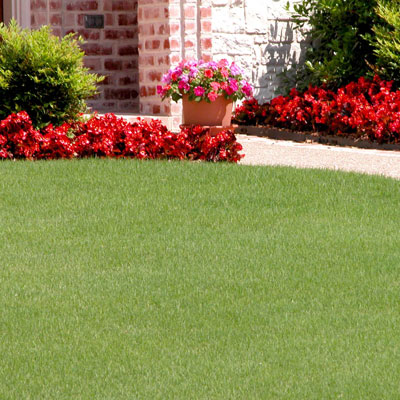Lawn Care Questions of Spring

See if any of these questions has been bouncing around in your mind this year.
“Do I need to aerate my lawn? How can I tell? What about dethatching?”
There are three times when lawn aeration is a good plan. If a vehicle has been parked daily on an area for a long period of time, it will have compressed the soil. The same goes for prolonged pedestrian traffic like a pet pacing back and forth in an area or kids playing ball in one space.
The most common issue, however, is when a layer of thatch forms. It’s usually going to be with bermudagrass, and most commonly with one of the hybrid types. It can also show up with zoysias, far less often with St. Augustine turf. The small clippings accumulate on top of the soil and beneath the runners, and they do not decay. Eventually they pack tightly and impede penetration of air, water and nutrients into the soil.
Use a “core aerator,” a piece of machinery that actually pulls small plugs out of the thatch. Dethatching machines, by comparison, flail the grass. In the process, they damage runners. They’re not the technique of choice.
“Is it a good idea to spread topsoil over my lawn? It’s really uneven.”
Those are actually two completely different questions. It is rarely a good idea to spread new topsoil over an existing lawn. It does not invigorate the grass, and it brings a great potential for introducing nutsedge (nutgrass) and other weeds. So, I’d say “No” to topdressing the lawn with topsoil.
As for the uneven spots, you could use a very high-quality topsoil product that you know to be free of weeds to fill in the voids. These are often created when we dig trenches and install pipes or wiring. Try as we will, all the soil we remove doesn’t end up back in the trenches.
If you have surplus topsoil in your own landscape, for example in a garden space or in high spots that you want to remove, use that soil. Or you can rake dry brick sand into the lawn for low areas that aren’t more than 1 inch deep. The grass will grow through it. You probably don’t want to use a mixture that contains any type of organic matter, because that will decay over time and the low spots will reappear.

“I was digging holes to plant new trees and shrubs last weekend. I found lots of grub worms. Is this the time to treat? What should I use?”
Do not treat for white grub worms at this time. They are the larval forms of June beetles. The adults fly, mate and lay eggs during late May in South Texas and June farther north. The eggs hatch six weeks later, and the small grubs start feeding voraciously, usually from late August until early November.
At this time of year, the grubs have finished their feeding and are ready to pupate and turn into June beetles, so there is no reason to treat. In fact, you may even be seeing grubs of some other species, and that insect may not be harmful to the grass anyway.
Treatment time is mid- to late June, but only if you have seen significant June bug activity or if you have experienced loss of turf in the past year. You have to have five or more grubs per square foot before measurable damage will be done. Your Texas Certified Nursery Professional can show you the labeled products to control them.
